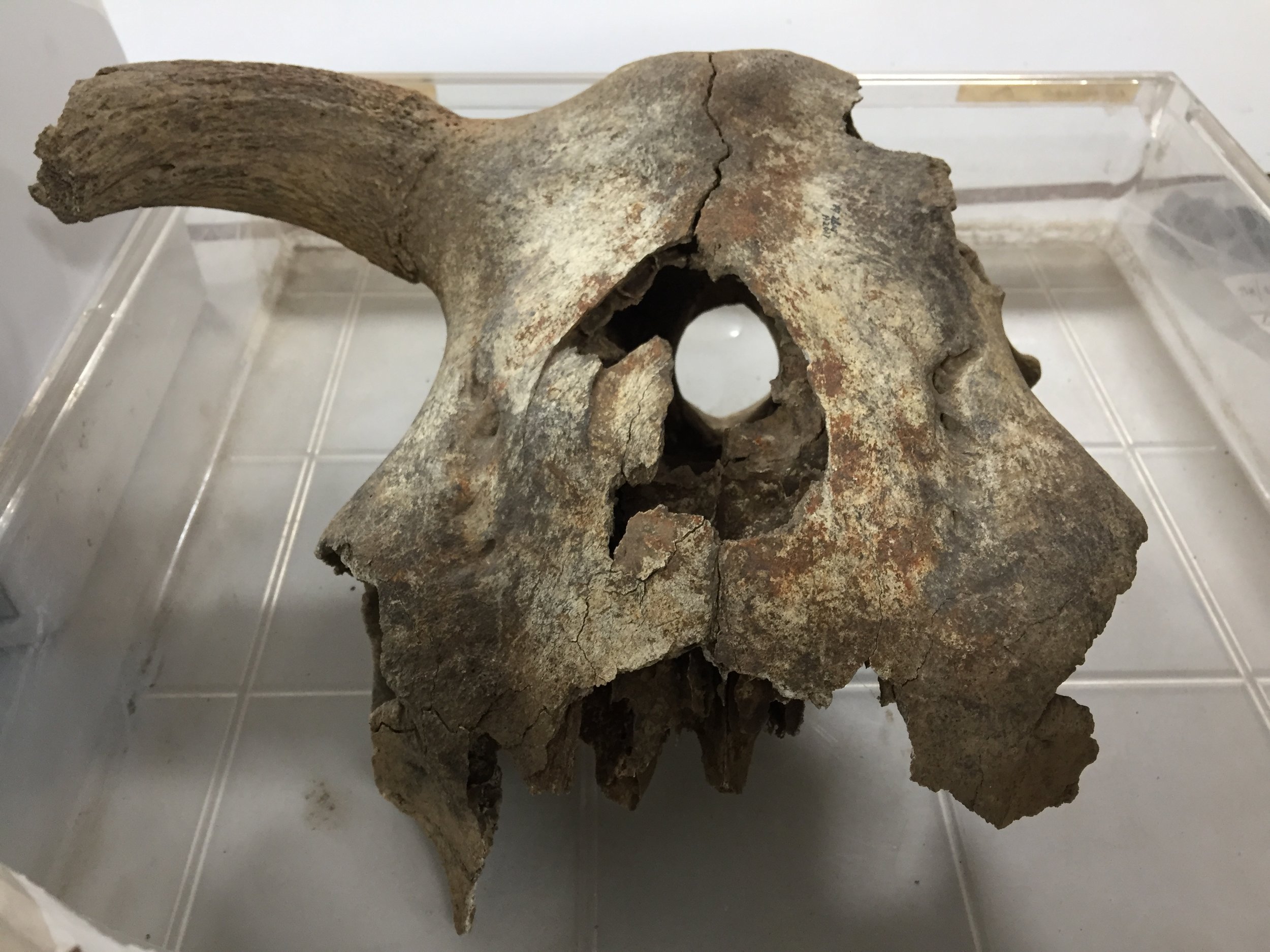Cow-abunga! - Ep 6
Cattle domestication
Modern domestic cattle descends from the aurochs (Bos primigenius). The dynamics of aurochs domestication is, as always when domestication is concerned, not well understood as of yet. They were supposedly domesticated in SW Asia some 8,000 years BP.
How do we identify cattle bones?
Cattle bones are usually identified by their large size (compared to most animals encountered within archaeological assemblages) and a number of morphological features which distinguish them from other large mammals, such as horse and red deer (C. elaphus). The latter are in fact often mistaken for cows, the reason for this being threefold. Firstly, the fragmented nature of archaeological remains and a bias towards cattle ID (due to their higher frequency when compared to deer) means red deer elements are sometimes identified as cattle. Secondly, prehistoric cattle was smaller than their modern counterparts, making it easier to confuse their remains with those of red deer. When complete specimens are present, the morphological differences between cattle, horse and red deer are however easily distinguishable.
What do cattle remains often indicate in an assemblage?
They can provide inference on the economy of the settlement (e.g. meat or dairy production), although it is important to remember that in the past many settlements probably had a somewhat mixed economy. This is usually carried out by analyzing the age profiles of your assemblage.
Cattle remains may be able to offer insight on the culture of a particular settlement. For instance, in Britain, more romanized sites are likely to have a higher number of cattle within their assemblages. A high number of cattle remains are sometimes also indicative of a military site.
THAT BIG COW MEME
Fig. 1. Iron Age Cow Skull with Pole Axe Damage.
Further Reading
Bloody Slaughter: Ritual Decapitation and Display At the Viking Settlement of Hofstaðir, Iceland
By Gavin Lucas and Thomas McGovern
European Journal of Archaeology, Vol. 10, No. 1 (2007)
[Online at http://www.nabohome.org/publications/Bloody%20Slaughter%2008.pdf]
Morris, J. (2011) Investigating Animal Burials: Ritual, mundane and beyond
BAR British Series 535
-Hillson, S. (1992) Mammal Bones and Teeth: An Introductory Guide to Methods of Identification
London: University College London Institute of Archaeology
O’Connor, T. & Sykes, N. (Eds.) (2010) Extinctions and Invasions: A Social History of British Fauna
Windgather Press
Fagan, B. (2015) The Intimate Bond: How animals shaped human history
London: Bloomsbury Press
Toynbee, J.M.C. (2013) Animals in Roman Life & Art
Barnsley: Pen & Sword
Merrifield, R. (1987) The Archaeology of Ritual and Magic
London: Guild Publishing London
Van Grouw, K. (2018) Unnatural Selection
Oxfordshire: Princeton University Press
Knickers (2018) Knickers, the magical Australian steer
Cleavers Press
Contact
Alex Fitzpatrick
Twitter: @archaeologyfitz
Simona Falanga
Twitter: @CrazyBoneLady
Music
"Coconut - (dyalla remix)"
